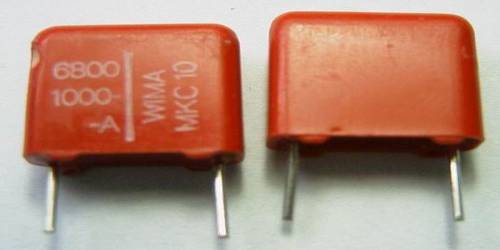Security personnel are tasked with stopping criminals from smuggling dangerous materials into a nation, and finding nuclear materials has proven to be challenging and expensive. New gadgets that Northwestern University researchers have created based on an inexpensive substance can now aid the detection and identification of radioactive isotopes.
The study team discovered they could build extremely effective detectors in both small, transportable devices for field researchers and very large detectors using cesium lead bromide in the form of perovskite crystals. The outcomes have taken more than ten years to produce.
The novel technology for detecting gamma rays, according to Northwestern professor Mercouri Kanatzidis, who oversaw the research, is not only less expensive than conventional equipment but also very effective at discriminating between rays of various strengths.
This method allows users to identify legal versus illegal gamma rays. These kinds of detectors are essential for national security since they help in nuclear forensics, medical diagnostic imaging, and the detection of smuggled nuclear materials across borders.
“Using the perovskite material, we have achieved high resolution in energy detection for gamma rays using a pixelated detector design,” Kanatzidis said. “This takes us a step closer to creating electronic systems for medical diagnostics and imaging, airport security and more.”
Our shelf is full of new possibilities we have yet to investigate more deeply. My research group is a rare combination of the engineering side and the crystal growth side of things.
Professor Mercouri Kanatzidis
The study will be published Dec. 7 (2020) in the journal Nature Photonics.
Kanatzidis is the Charles E. and Emma H. Morrison Professor of Chemistry in the Weinberg College of Arts and Sciences. He has a joint appointment with Argonne National Laboratory.
The team’s previous work found that the novel cesium lead bromide detector performed as well in detecting gamma rays when compared to the traditional cadmium zinc telluride (CZT) detector.
New research, however, has increased the spectrum resolution much beyond that of conventional designs, from about 3.8% to 1.4%, detecting energy even from very weak sources. This is due to the use of pixels rather than planar electrodes and enhanced crystal sizes.
Radioactive isotopes emit gamma rays that differ slightly in energy, often differing by just a few percentage points. By identifying variations down to a few percentage points, users can more accurately determine the gamma ray source using the new material.
Moreover, utilizing even slightly impure materials often causes detectors to be ineffective or less efficient, therefore device manufacturers must look for ultrapure CZT to obtain accurate readings.
To the researchers’ surprise, their own material could have 5 to 10 times more impurities than CZT and still perform, making it easier and cheaper to produce. Resolution is also critical to medical imaging like SPECT scans.
Kanatzidis said there’s a great deal of interest in the field, especially given the cost and safety implications of malfunctioning equipment. But he claimed that the reason why this area hasn’t advanced more quickly is because most research groups either concentrate on materials synthesis or on X-ray and gamma ray detectors, whereas his group does both. Kanatzidis’ lab looked at more than 60 promising compounds before landing on cesium lead bromide.
Even with advancements enabled by the new material, Kanatzidis said his work with collaborators at Northwestern and Argonne doesn’t end.
“Our shelf is full of new possibilities we have yet to investigate more deeply,” Kanatzidis said. “My research group is a rare combination of the engineering side and the crystal growth side of things.”
Yihui He is a research assistant professor in the Kanatzidis lab and the first author of the paper.
“The new device fabrication protocols we report with our collaborators at the University of Michigan could lead to mass production of cesium lead bromide detectors in the near future,” He said.
Professor Zhong He’s group at the University of Michigan participated in detector characterization and analysis. Argonne scientist Duck Young Chung was a lead collaborator in the effort.
Actinia, a new business formed by Kanatzidis and associates, will market cesium lead bromide detectors for gamma and X-ray detection and identification. These new detectors will have significant effects on nuclear safety, homeland security, and medical diagnostics.















